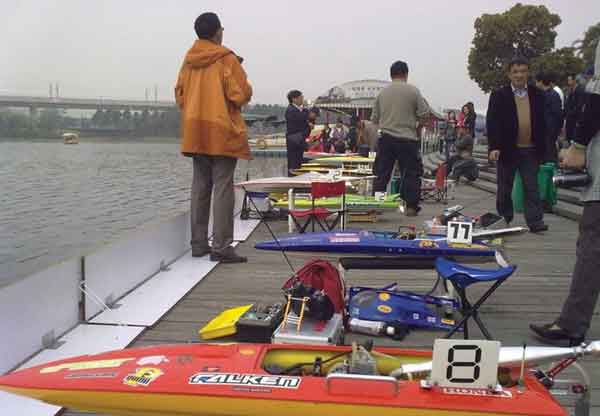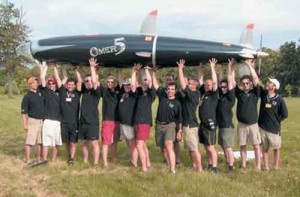Every nation aspiring to be a leader must go through the following four logical levels:
- Level 1: At this level, nations possess only the capability to maintain and operate the weapons which are usually sourced out from other leaders.
- Level 2: Nations at this level acquire the capability to reproduce the weapons indigenously with a minimum changes. The percentage of imports is still fairly high.
- Level 3: Nations possess the capability to adapt the weapons to suit their specific needs and manufacture them indigenously. The level of imports, be it sub-assemblies or raw materials in any form at this level, is near zero.
- Level 4: Nations advance further to create brand new weapon systems distinct and innovative which are state-of-the-art involving disruptive technologies. Global leadership as an arms supplier is only established when countries attain this level of expertise. There is no imported content be it design, software or hardware.
The design and construction of a ship especially a warship is a complex feat of engineering. The ship must have an ability to survive in all weather conditions under well-defined limited fire or damage.
In the absence of accountability and an informed public, military planners, bureaucrats and governments often claim much higher levels of expertise and project responsibilities than factually exist. Senior auditors as watchdogs need to review the imported and indigenous costs and schedules when projects are being assessed. Such a review must be all inclusive with all direct and indirect costs from the cradle to the grave. Determining the level of competence that has been attained requires rigorous honest introspection and accurate accounting of all expenditures. In addition a holistic and independent approach to accident investigation helps to reveal intrinsic design deficiencies within the system.
The design and construction of a ship especially a warship is a complex feat of engineering. The ship must have an ability to survive in all weather conditions under well-defined limited fire or damage. A country that claims Level 4 leadership in ship design has also to be self-sufficient at Level 4 in the original design and manufacture of the propulsion & auxiliary machinery, communications, armament, logistics, fire control and sensors which are all so essential and a part of every warship. These assemblies represent nearly eighty percent of the procurement costs. They are the pre-essentials from which a design team has to make choices to meet the mission. Such assemblies should be well past local development to ensure that the designer is not held up for want of data. Often, the local design and manufacture of these assemblies are completely neglected in preference to bought out supplies from other arms suppliers. Until this issue is addressed in depth, it is unlikely that Level 4 leadership will be attainable. In addition, a national naval design electronic met a database on secure high speed dedicated fibre is essential if rapid modular design and construction are to follow. Sadly, despite the easy availability of software talent, such a database has yet to be conceptualized.
Level 4 leadership requires a high degree of innovations which can be promoted by:
- Creative Brains
- Model Clubs and Competition.
- Natural Selection.
- Do-It-Yourself (DIY) market.
- Appropriate Training.
- Tenure.
Creative Brains
A good designer uses both hemispheres of his brain. The left hemisphere is the one connected to memory and analysis. The right hemisphere is linked to creativity and the ability to compose, write and draw. Historically, because of our complex social structure, there has been greater emphasis on analytical skills and memory and lesser effort in the development of the right hemisphere of the brain. Most evaluation tests during recruitment are biased towards the left hemisphere. The test for the strength of the creative brain is simple. Take a team of engineers to observe any piece of modern technology for fifteen minutes. On return give each person a black crayon, a sheet of paper on a supporting pad and ask him/her to sketch freehand within fifteen minutes the perspective image of that object. Award one mark for each of the twenty salient features and twenty for image likeness, scale and presentation.
The spectrum of the scores and the drawings could be surprising. Engineering drawing has been neglected in many technical institutions since the administrators and staff themselves, during their student days, had a perfunctory interest in the subject. To be good innovators, it is of fundamental importance that the development of both brain hemispheres is emphasized. This must be done at an early age starting in schools. Drawing and sketching are essential and integral to innovation. In Confucian cultures, dress and handwriting are both highly valued assets. On weekends, calligraphy competitions are held on public roads near intersections using water, a bucket and a paint brush. Hundreds of onlookers watch patiently. The enthusiasm for that perfection in coordination and memory between hand and mind is amazing and worthy of emulation.
Model Clubs and Competition
Innovation stems from competition and is driven by the younger generation. It often requires a long period of quiet incubation followed by intense refinement that originates through dialog with fellow innovators with similar interests. Because of this, model clubs for green cars, robotics, self-propelled submarines, AUVs, SUVs, air planes, rockets, solar power, maglev power, sailing boats, railways, helicopters and science fairs exist in countries aspiring for a leadership role.
Nature has enabled us to adapt to our surroundings and there are some advantages that can be availed. The Marathon run is dominated by the Kenyans and Ethiopians because they have for centuries enjoyed long distance running at altitudes.
Some of the best innovations originate in model clubs. It is unfortunate that neither the public or educational institutions in India have been able to formulate a strategy for promoting such clubs on a national level. Apple co-founder Steve Wozniak writes “Without computer clubs there would probably be no Apple computers”: He was referring to Homebrew Computer Club that was an early computer hobbyist club in Silicon Valley which met from March 1975 to roughly 1977. From the ranks of this club came the founders of many microcomputer companies, including Bob Marsh, George Morrow, Adam Osborne and Apple founders Steve Jobs and Steve Wozniak. Figs. 9 to 11 show typical meetings of model clubs.
It may be relevant to point out that young amateurs have already shown that miniature robotic autonomous vehicles both on land, air, water and space can be successfully designed and used singly or even in swarms to revolutionize conventional warfare at a fraction of existing costs and manpower. This powerful disruptive trend presently in its infancy will only get stronger with time.
Natural Selection
Nature has enabled us to adapt to our surroundings and there are some advantages that can be availed. The Marathon run is dominated by the Kenyans and Ethiopians because they have for centuries enjoyed long distance running at altitudes. Similarly, the Incas like the Nepalese have 20 percent more blood than a lowlander and have a higher percent, by weight, of haemoglobin which absorbs oxygen. It is but natural that they would have better endurance at higher altitudes than those from the plains. The records for Everest demonstrate this irrefutable fact.
The Mohawk and Ojibwa natives of Eastern America through evolution are extremely comfortable at heights without a safety belt. They are the best and fastest steel erectors in the world. (See Fig. 12). Nearly all the sky scrapers in New York were built by them.
Similarly, sea faring people have over the years had a love affair with the sea. The people of the great littoral states are usually fervid about recreational sailing, wind surfing, swimming, and recreational diving. They also jealously guard the sea against man made pollution. They number in the hundreds of thousands but some take it to the next level and become professional sailors. The neuro plasticity of the brains of our own coastal sea faring people have with time also evolved to cope with the vagaries of the sea. This talent pool with salt water in their veins remains largely untapped by our military since no value has been placed on that skill set. Encouraged by a formal education, they may prove to be formidable innovators or Admirals, worthy successors to the legendary Kanoji Angre of Alibag Kunjali Marrakar of Calicut and the great Parsee ship builder L.N Wadia.
Do-It-Yourself Enthusiasts
Historically, mechanics and artisans have been poorly valued in our society. Because of this, a large number of professional graduates have limited interest in undertaking any repairs of the many domestic and personal gadgets that we see in every home. The results of a Do It Yourself (DIY) survey will show that many engineer claimants do not have the enthusiasm or skill set to undertake the repairs of their everyday machines. The DIY movement in India has yet to gain traction. Countries that have attained Level 4 status show large number of DIY enthusiasts who enjoy building and repair of their homes, their cars, boats, planes and every electronic home gadget. Fig. 13 shows a typical home workshop. The training and confidence that a DIY job provides is incredible. It is suggested that universities and the armed forces should hold seminars and organize tool rental outlets to promote the DIY movement so essential if we are to further innovation.








India has been languishing at level 3 for decades while our import dependence has been to the extent of 70% instead of being near zero as ought to be. Main reason is nexus & power of the arms lobby wields all over. There are many examples- for decades MBT Arjun had been at the receiving end of media campaign, successful production lines of a successfully indigenised rocket system was halted midway,local development of 155 mm guns was not allowed inspite of its production drawings being with us for two decades, Tatra way shows how it all works at every level. A nation which can put a ballistic miles on the dot 5000 km away surely can make ordinary bombs,tanks, trucks too provided there is more of pride & less of prejudice.
Now that we are realizing the worth of indigenous with economic slow down & corruption being a dirty word-hopefully we shall migrate to level 4 slowly but steadily.